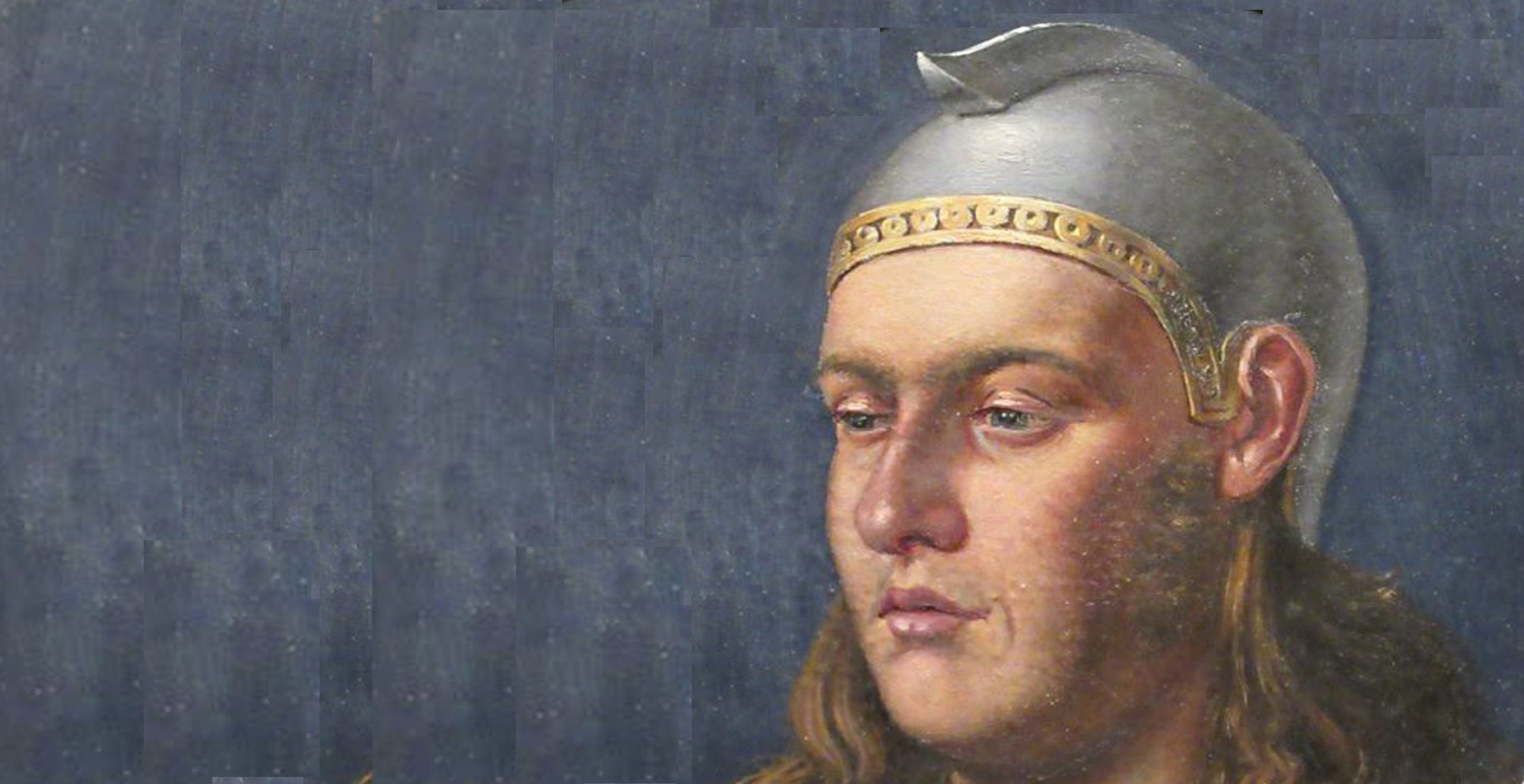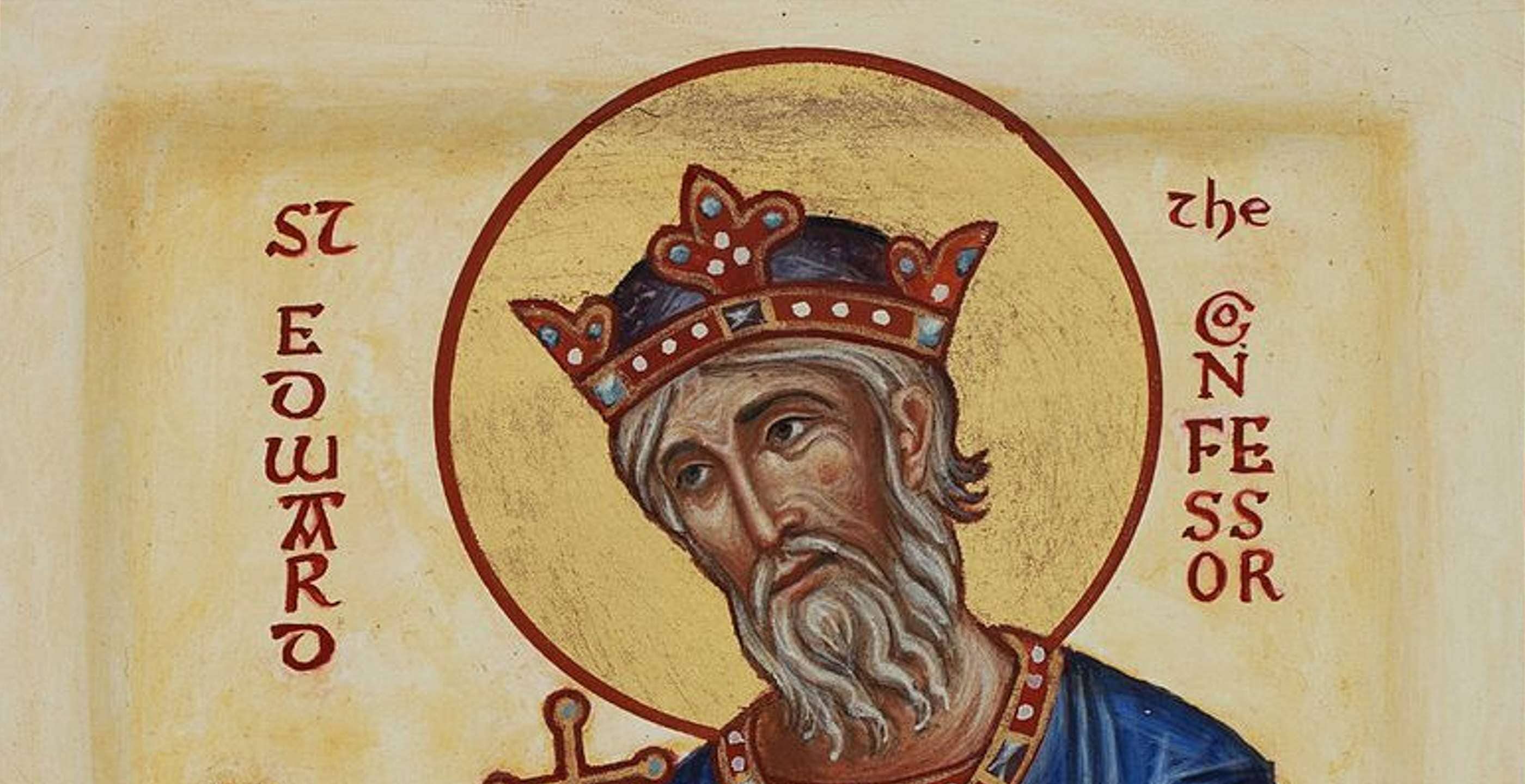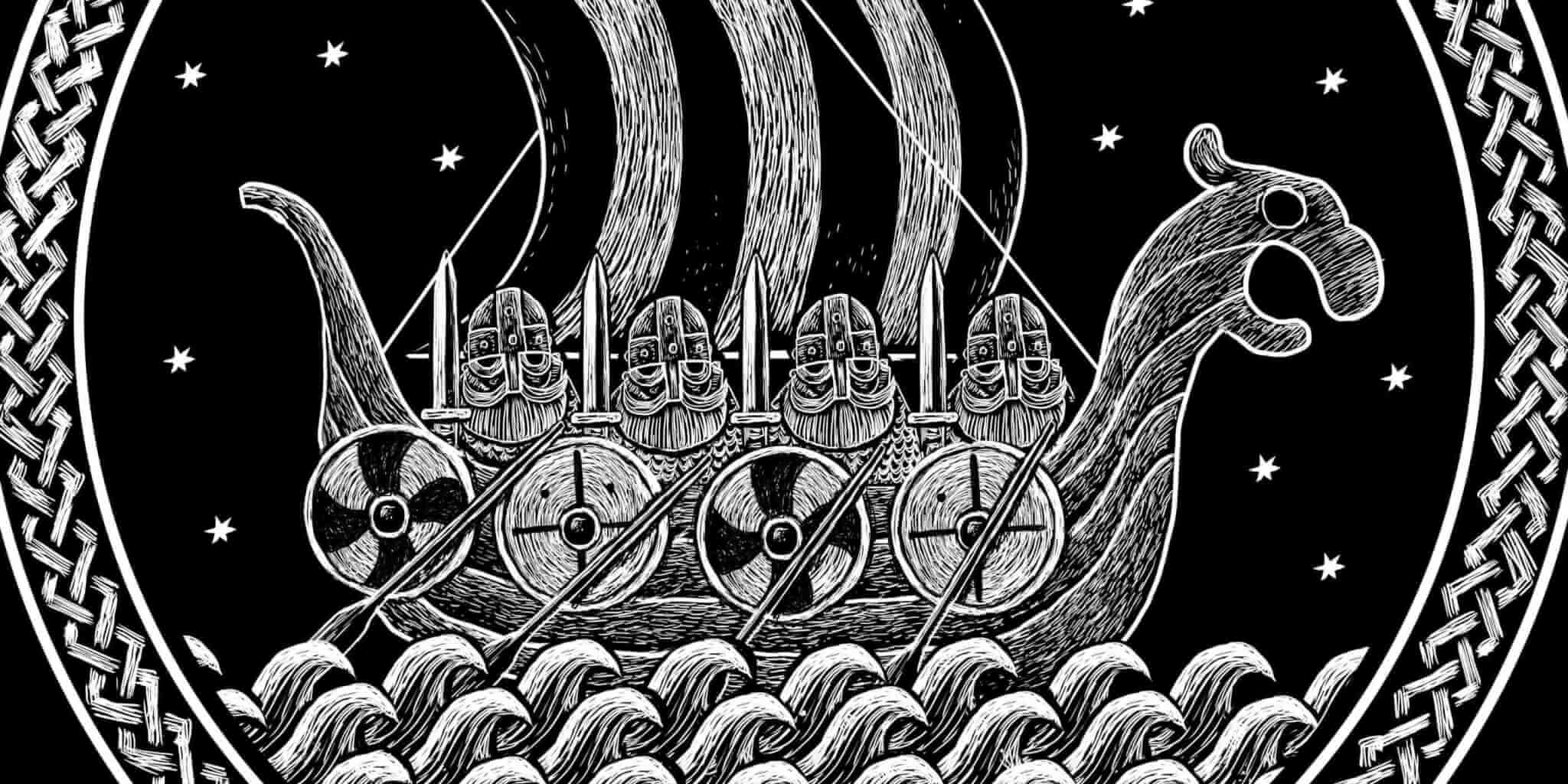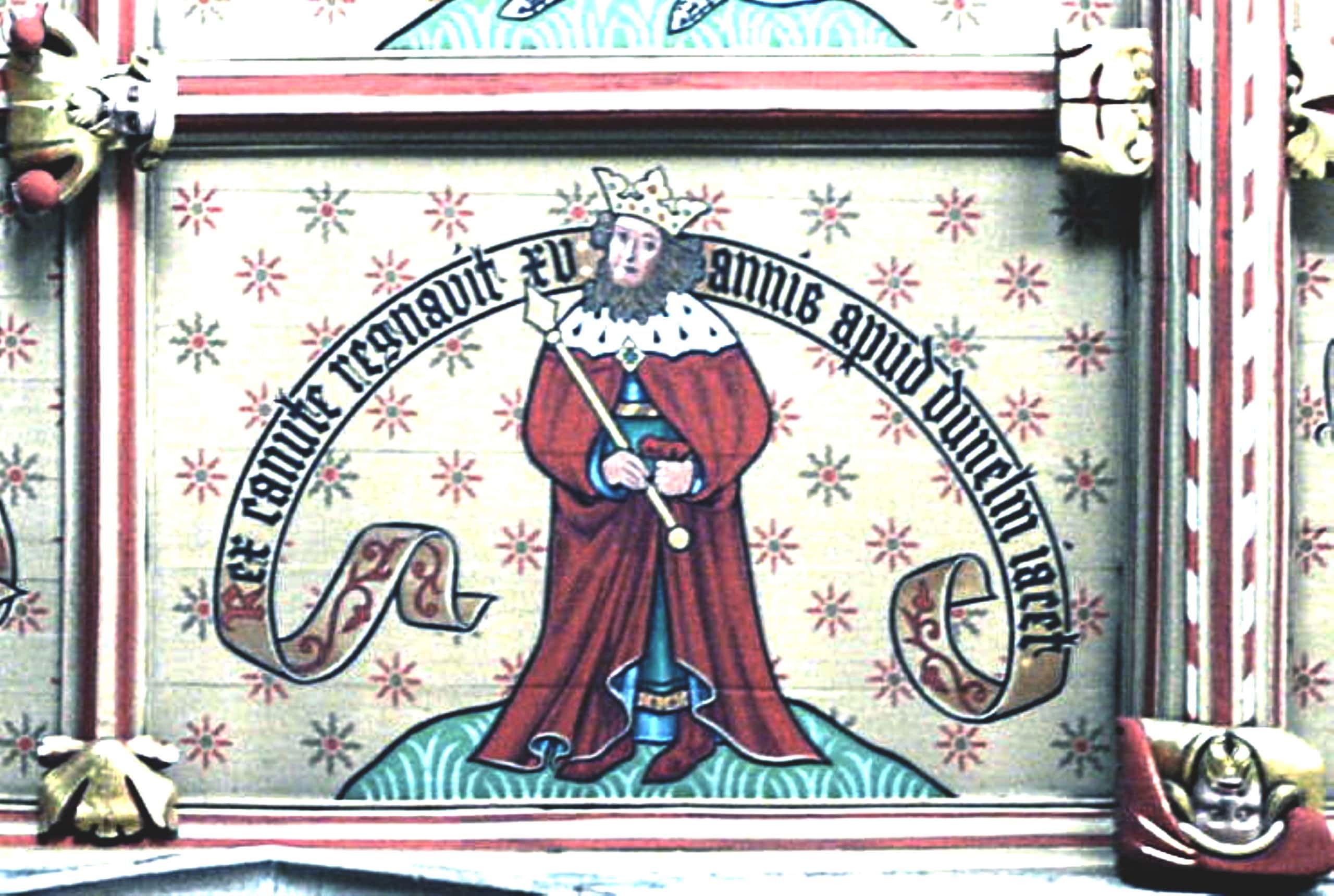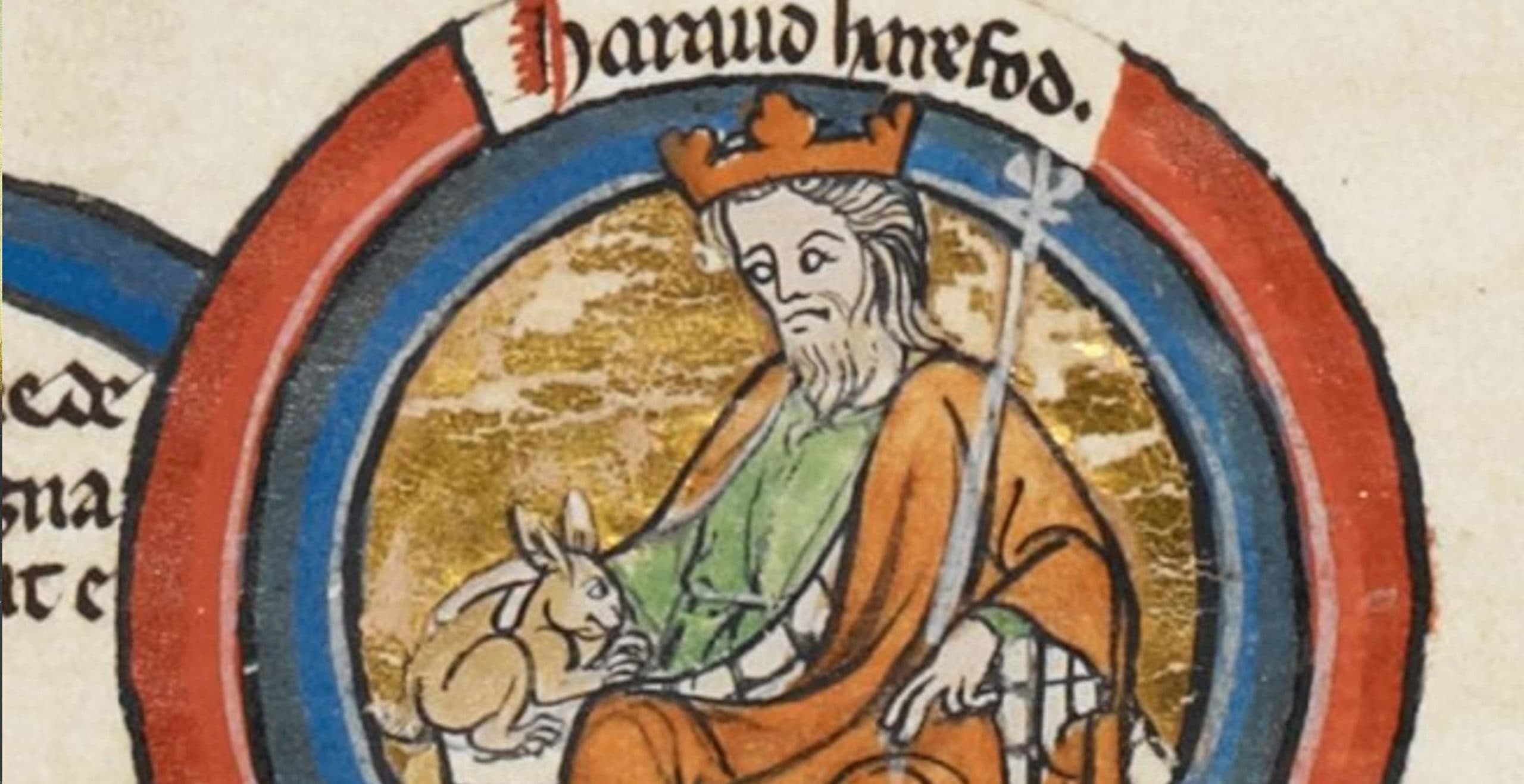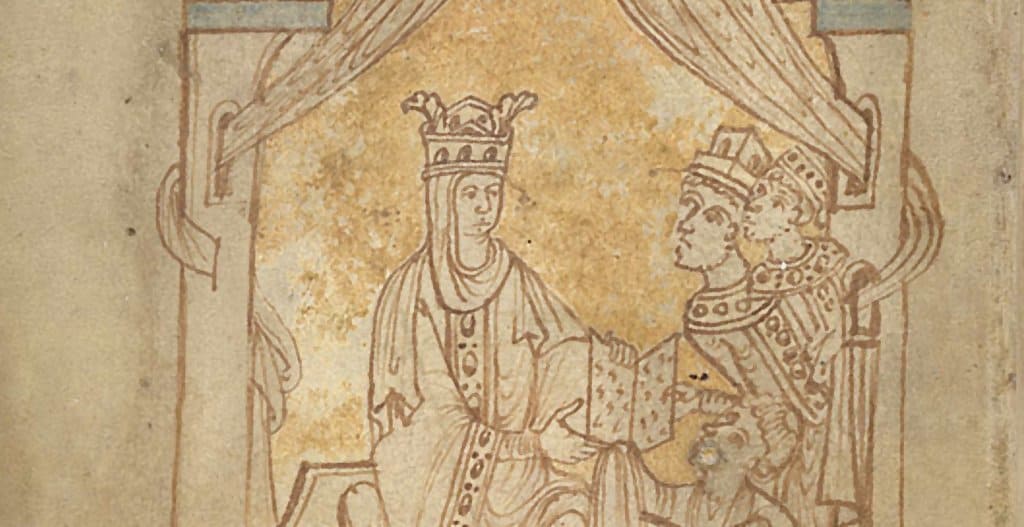Harthacnut, sometimes known as Canute III, reigned for a short time over his inherited kingdoms both in Denmark and England. During this time he struggled to hold onto the legacy left to him by his famous father, King Cnut, a man who had ruled over much of Scandinavia with territory expanding across swathes of northern Europe.
King Harthacnut would live much of his life in the shadow of his successful father. Born in 1018, he was the son of King Cnut and his second wife, Emma of Normandy.
His mother already had two sons and a daughter from her previous marriage and had ruled as Queen of England alongside her first husband King Aethelred.
When he passed away, her sons, Edward the Confessor and Alfred Atheling had a precarious future as Ethelred’s children from his previous marriage were in line for succession whilst Emma tried to secure her own son’s future.
All however was about to change when King Sweyn Forkbeard of Denmark conquered England in 1013, forcing Emma and her children to reside in safety in Normandy until Sweyn died the following year.
Following their return in 1015, Sweyn Forkbeard’s son Cnut launched his invasion of England and by late 1016 he had become King of England.
With Emma grasping to maintain power, the arrangement of her marriage to King Cnut seemed politically fortuitous and would hopefully secure not only her own future but that of her sons who had been sent to live in Normandy under the guidance of her brother.
King Cnut and Emma’s marriage very quickly led to the birth of their son Harthacnut as well as a daughter called Gunhilda.
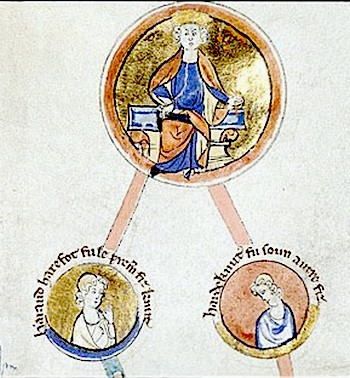
With their new union cemented by the birth of their children, it was soon decided that the sons he had with his previous wife, Aelgifu of Northampton, would be cast aside in the line of succession as a young Harthacnut was chosen to follow in his father’s footsteps.
Meanwhile, King Cnut was managing his ever-expanding territory and when Harald III died in 1018, he subsequently sailed to Denmark in order to claim the throne.
As a result Harthacnut would be destined to spend much of his youth in Denmark as had been arranged by his father. Whilst still a child, Harthacnut was made Crown Prince of the Kingdom of Denmark, although Ulf Jarl, Cnut’s brother-in-law, was to serve as regent.
Throughout Harthacnut’s childhood his father grew in power and soon became one of the most significant figures in Scandinavia, able to defeat his opponents at the Battle of Helgea.
By 1028 he was already laying claim to the throne of Norway and he became the ruler of a North Sea Empire.
With such enormous shoes to fill, when King Cnut died in 1035, Harthacnut had quite the task ahead of him.
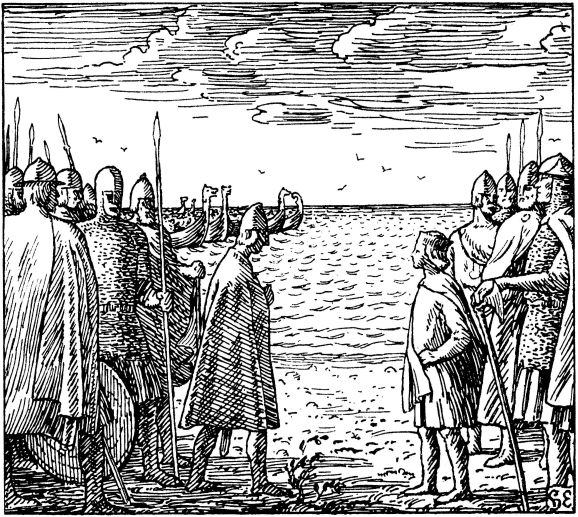
As he succeeded him as King of Denmark he continued to face a military threat from Magnus I of Norway.
Meanwhile, back in England, Harold Harefoot, the son of Cnut and his first wife, was ruler whilst Emma of Normandy held onto power in Wessex.
Looking to maintain his grip on power and usurp the other claimants to the throne, namely Harthacnut, Harold employed any measure he deemed necessary to secure the crown. This included murdering Emma of Normandy’s son, Alfred Atheling.
In 1036, Alfred and his brother Edward had travelled from their exile in Normandy to England where they were supposedly under the protection of their half-brother Harthacnut who was still in Denmark. Unfortunately this security was not forthcoming and upon their arrival, Alfred was seized by the Earl Godwin of Wessex who was acting on behalf of Harold Harefoot.
Whilst Harold viewed their position as a threat to his own, he did everything to stop them, including having Alfred blinded with hot pokers in order to take him out of the running. Sadly he would later die from the injuries he sustained, whilst Edward managed to escape with his life.
In 1037, Harold was accepted as King of England, especially since Harthacnut was preoccupied in Denmark.
Emma however would now flee to Bruges and was later met by Harthacnut who sailed with ten ships to meet her and arrange a strategy. This however would not be necessary as Harold had fallen ill and he did not have much longer to live. In March 1040 he died and thus paved the way for Harthacnut to succeed the English throne.
Together with his mother Harthacnut arrived in England on the 17th June 1040 along with a fleet of around sixty warships. Whilst his succession to the throne was expected, he remained cautious enough to arrive with a force of men to support his arrival.
As soon as he was king, the first thing on his agenda was to avenge the murder of his half-brother Alfred. With his mother keen to see justice served for the sake of the son she had lost, Harthacnut had Harold’s body disinterred from its resting place in Westminster and instead had it publicly beheaded. The corpse of the former king was subsequently thrown into the River Thames, only to be later retrieved and buried in a churchyard.
Meanwhile, another man confronted by his previous crimes was Godwin, the Earl of Wessex. As a result of his involvement in the death of Alfred Atheling, the Earl of Wessex was put on trial, however Godwin was remarkably able to disentangle himself from the situation and evaded his punishment by offering King Harthacnut a substantial bribe in the form of an ornately decorated ship. The cost of the ship closely resembled the amount he would have had to pay in compensation (wergild) had he been found guilty.
With the event of his brother’s death being formerly dealt with, the rest of Harthacnut’s short reign was dedicated to other matters, including his decision to double the size of the English fleet in order to deal with any outside threats posed to both England and his territory in Denmark. In order to fund this increase in military spending, there was a subsequent increase in taxation.
Inevitably, the increase in taxation lead to resentment against his rule, particularly as it coincided with a poor harvest leading to widespread poverty and suffering.
To make matters worse, Harthacnut brought with him a different style of kingship which did not suit the usual form of governance in England, whereby a king ruled in a council with chief advisors.
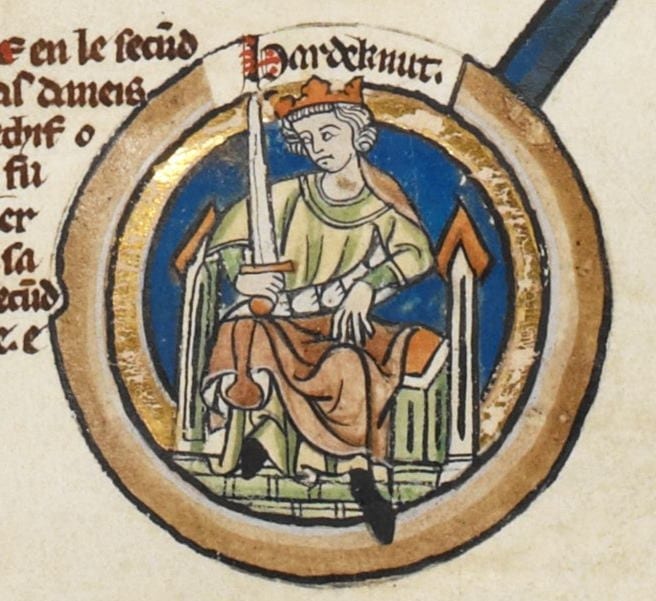
Instead, he maintained an autocratic rule such as he had sustained in Denmark and remained unwilling to adapt to the English way, as he was distrustful of the earls around him at the time.
In order to maintain this autocracy he needed to intimidate and cajole those around him. Initially this may have worked, however it soon lead to other more volatile situations that were compounded by his heavy-handed approach.
One such example came in 1041 when an incident in Worcester with some tax collectors turned violent and lead to their murder. Whilst the riots had emerged from the harshness of the measures imposed, Harthacnut chose to respond in an equally forceful manner using a method known as “harrying”.
Harthacnut’s orders included burning down the town and killing civilians. Upon hearing the news of this punishment, many of the residents were able to flee and take refuge against Harthacnut’s troops on an island in the River Severn.
In the unfolding drama, the people of Worcester were able to maintain a semblance of safety and although the city was burnt and plundered, civilian casualties were low.
This event would only serve to cement popular opinion at the time, which was the resentment of Harthacnut’s reign and his autocratic style which made him so unpopular.
To make matters worse, Harthacnut had Earl Eadwulf of Bernicia, a man who ruled with semi-independence in the north of Northumbria, murdered in cold blood by fellow earl Siward. Such a response to a man that had been attempting to reconcile with the king left feelings of seething resentment amongst the general public, in particular the citizens of Northumbria.
Such was his unpopularity that the Anglo-Saxon Chronicle documented Eadwulf’s murder as “betrayal” as King Harthacnut was viewed as a man who could not keep a promise, he was in fact an “oath-breaker”.
For the people of England who endured King Harthacnut’s reign for a short two years until his death, it was still two years too many.
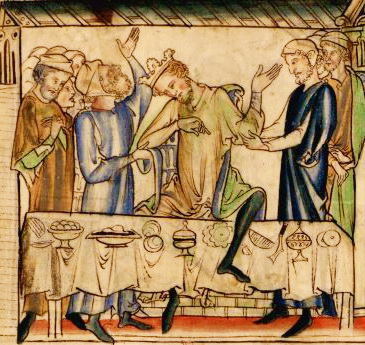
His death on 8th June 1042, from a suspected stroke brought on by copious amounts of drinking, brought an end to his miserable reign for the people of England.
As the last Danish king to rule over England, Harthacnut fell short of his father’s legacy and military prowess and was condemned to a mere blot in the copybook of a wider tale of impressive early medieval kingship.
Jessica Brain is a freelance writer specialising in history. Based in Kent and a lover of all things historical.
Published: 12th May 2022
